Algae growth is a common concern for fish tank enthusiasts. The presence of excessive algae can not only be unsightly but also disrupt the delicate balance of the aquarium ecosystem. In order to maintain a healthy and thriving fish tank, it is important to understand what kills algae and how to effectively control its growth.

Understanding Algae Growth in Fish Tanks
Before diving into the solutions, let’s first explore why algae thrives in fish tanks. Algae are photosynthetic organisms that require light, nutrients, and favorable water conditions to grow.
Excessive light, high nutrient levels, and poor water quality can all contribute to the rapid growth of algae. Understanding these triggers will help us identify effective methods to combat algae growth.

Natural Methods to Control Algae
When it comes to killing algae in fish tanks, natural methods can be both effective and safe. One popular natural approach is the use of barley straw. Barley straw releases compounds that inhibit algae growth without harming fish or other aquatic organisms. It acts as a natural algaecide, gradually reducing the algae population over time.
Additionally, introducing algae-eating organisms can help control algae growth. Fish like Siamese algae eaters, certain species of plecos, and snails can consume algae and help maintain a balanced ecosystem. Reducing the amount of light exposure by adjusting the lighting schedule and utilizing natural light/dark cycles can also hinder algae’s ability to thrive.
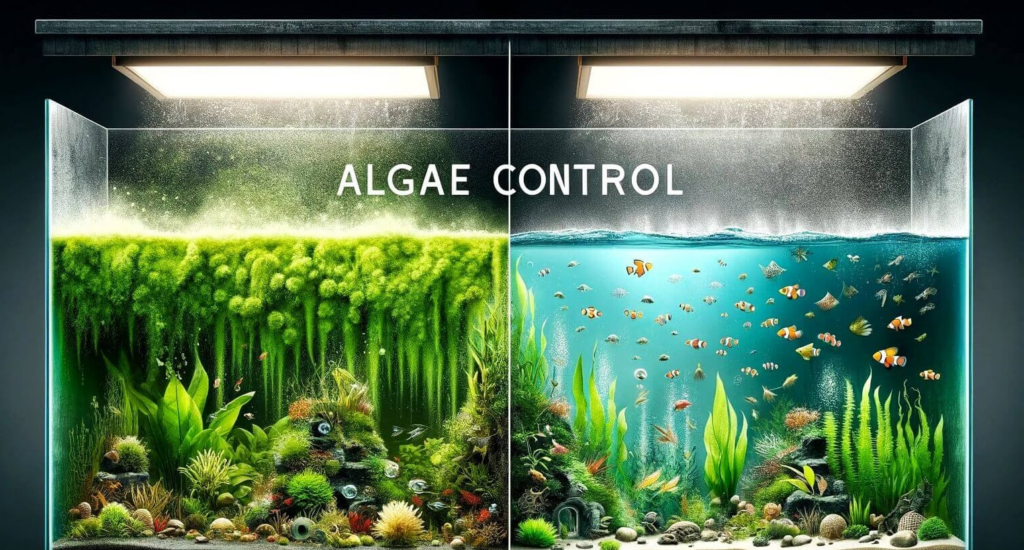
Chemical Approaches to Algae Control
In cases where natural methods are not effective or the algae growth becomes too severe, chemical treatments can be used. Algaecides, such as copper-based or hydrogen peroxide-based products, are available in the market for controlling algae.
Products like:
- API ALGAEFIX Algae Control – A Fast-acting and effective algaecide that controls algae growth in freshwater tanks and keeps aquarium glass, ornaments and plants clean.
- API MARINE ALGAEFIX Algae Control – Used to effectively control a wide array of saltwater algae growth and keeps marine and reef aquariums clean and clear.
It is important to carefully follow the manufacturer’s instructions and dosage recommendations when using chemical treatments. Always prioritize the safety of the fish and other tank inhabitants.
Utilizing Algae-Eating Invertebrates
Introducing algae-eating shrimp and other invertebrates can be an effective way to enhance natural method to control algae in fish tanks.
These creatures feed on various types of aquarium algae, helping to keep algae levels in check. Species like Amano shrimp are particularly good at consuming algae and maintaining a clean tank environment.
Blue-green algae can be particularly troublesome in fish tanks. Introducing algae-eating shrimp helps control their growth effectively. Maintaining a fish tank naturally involves regular cleaning and balanced nutrient levels to prevent algae overgrowth.
Controlling Algae Through Nutrient Management

Excess nutrients such as fish waste and uneaten food contribute to algae overgrowth in fish tanks. When these nutrients accumulate, they create an environment where algae thrive, particularly blue-green algae and brown algae.
Managing these nutrients by performing regular water changes and avoiding overfeeding can help control algae bloom. Ensuring that the tank is not exposed to direct sunlight also reduces the risk of green water and excessive algae growth.
Algae Control Through Tank Maintenance
Regular tank maintenance is crucial in algae prevention. Manual removal of algae with an algae scraper or brush during water changes can help keep algae growth in check.
It is important to clean all surfaces and decorations thoroughly to remove any potential algae spores.
Monitoring and maintaining appropriate water parameters, such as nitrate and phosphate levels, can also prevent excess nutrient buildup that promotes algae growth.
Popular Algae Control Techniques and Products
Various techniques and products have been developed specifically for algae control in fish tanks. UV sterilizers can be highly effective in controlling algae by killing it at the cellular level.
Algae-eating fish, like otocinclus catfish and certain species of cichlids like the American Flagfish, can be introduced to the tank as a natural form of algae control. Other products, such as algae inhibitors and algaecide additives, are available to prevent and combat algae growth.

Preventing Algae Growth in Fish Tanks
Prevention is always better than cure when it comes to algae control in fish tanks. Performing regular tank maintenance, ensuring proper water circulation, and avoiding overfeeding are key preventive measures.
Additionally, maintaining a balanced ecosystem with a suitable number of plants and algae-eating organisms can help reduce algae growth.
Too many nutrients in the tank can lead to excessive algae growth, so it’s important to monitor and manage nutrient levels.
Incorporating invertebrates that eat algae can also be an effective strategy to keep algae under control. Invertebrates eat algae naturally and can help maintain a clean and healthy tank environment.
Conclusion
Controlling algae in a fish tank is an ongoing process that requires attention to various factors.
Natural methods, chemical treatments, proper tank maintenance, and prevention strategies all play a crucial role in keeping algae growth under control.
By understanding and implementing these techniques, you can create a healthy and visually pleasing environment for your fish to thrive.



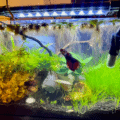
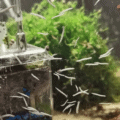



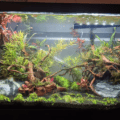
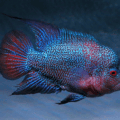

1 thought on “What Kills Algae In Fish Tank?”